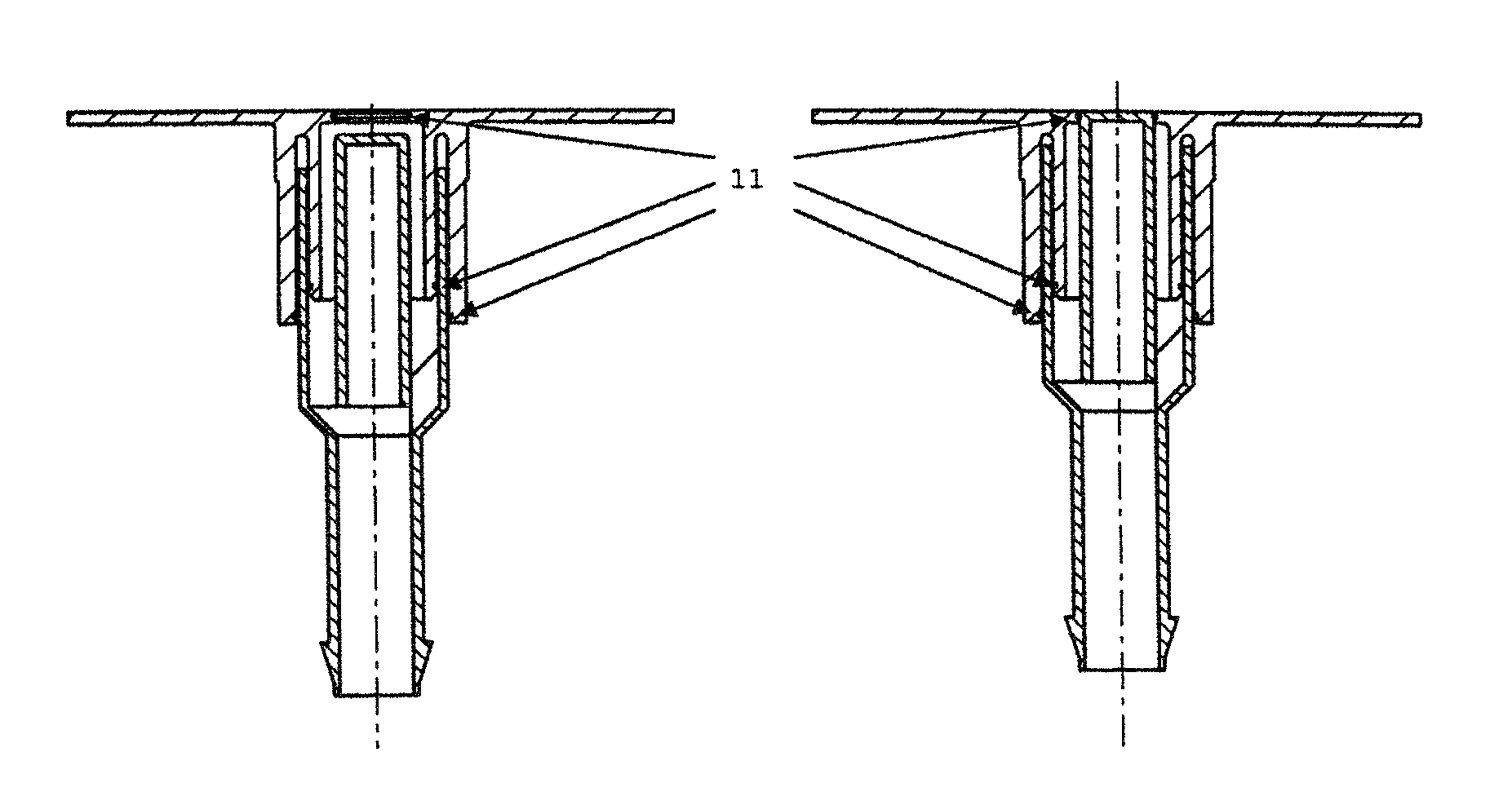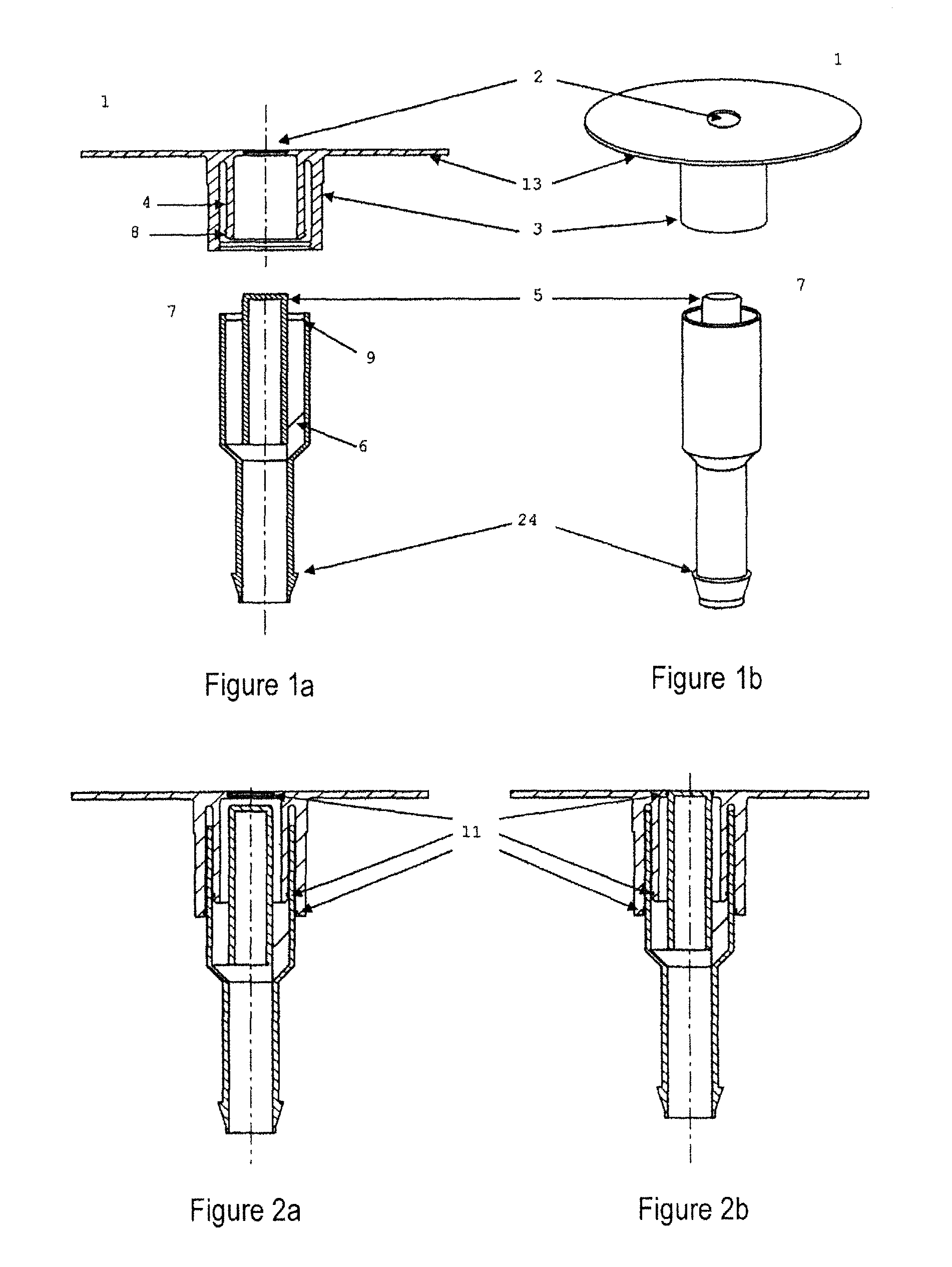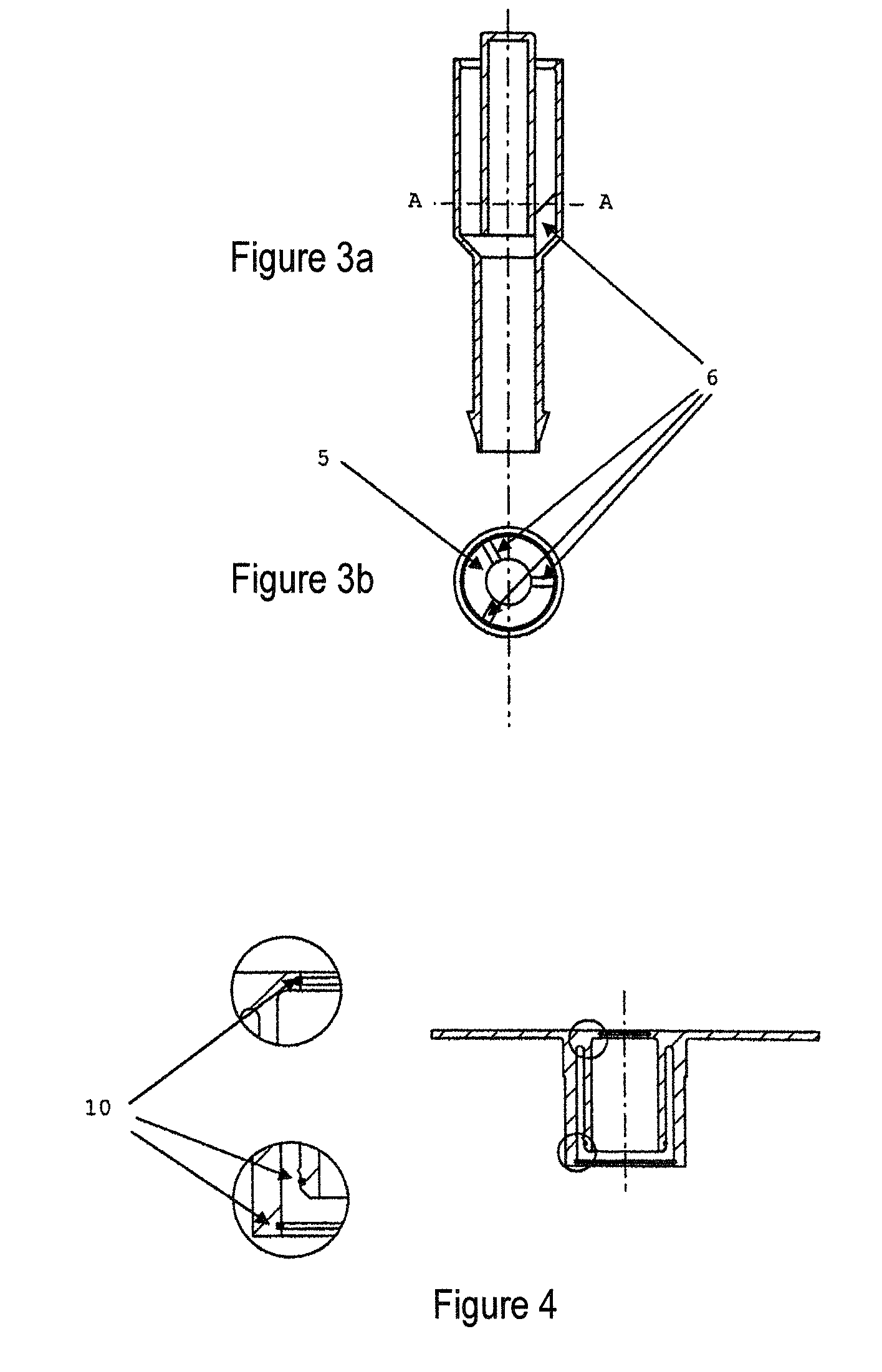Closure for a container
a container and closure technology, applied in the field of container closure, can solve the problems of unfavorable use on single-use reactors, mixing or bioreactors, and the dead space in the closure itself, and achieve the effect of avoiding contamination of the environment, avoiding individual risk, and facilitating production and handling
- Summary
- Abstract
- Description
- Claims
- Application Information
AI Technical Summary
Benefits of technology
Problems solved by technology
Method used
Image
Examples
Embodiment Construction
[0046]According to FIG. 1a to FIG. 2b, the closure for a container comprises an upper part 1, which can be connected to the container, and a lower part 7. The upper part has an opening 2 and has an outer hollow body 3 and an inner hollow body 4 arranged coaxially with the latter. The inner hollow body 3 and the outer hollow body 4 form an intermediate space with each other. In order to close the opening 2, a plug 5 is held coaxially in the lower part 7, which is in the form of a hollow body, by means of at least one retaining device 6, whereas, in order to open the opening 2, the upper region of the lower part 7 can be displaced longitudinally in the intermediate space away from the container. The longitudinal displaceability of the lower part 7 is restricted by locking devices 8, 9.
[0047]FIG. 1a shows a cross section through an exemplary embodiment of the closure for a container, wherein the upper part 1 and the lower part 7 are illustrated separately from each other. The same exem...
PUM
| Property | Measurement | Unit |
|---|---|---|
| length | aaaaa | aaaaa |
| flexible | aaaaa | aaaaa |
| breaking points | aaaaa | aaaaa |
Abstract
Description
Claims
Application Information
 Login to View More
Login to View More - R&D
- Intellectual Property
- Life Sciences
- Materials
- Tech Scout
- Unparalleled Data Quality
- Higher Quality Content
- 60% Fewer Hallucinations
Browse by: Latest US Patents, China's latest patents, Technical Efficacy Thesaurus, Application Domain, Technology Topic, Popular Technical Reports.
© 2025 PatSnap. All rights reserved.Legal|Privacy policy|Modern Slavery Act Transparency Statement|Sitemap|About US| Contact US: help@patsnap.com



